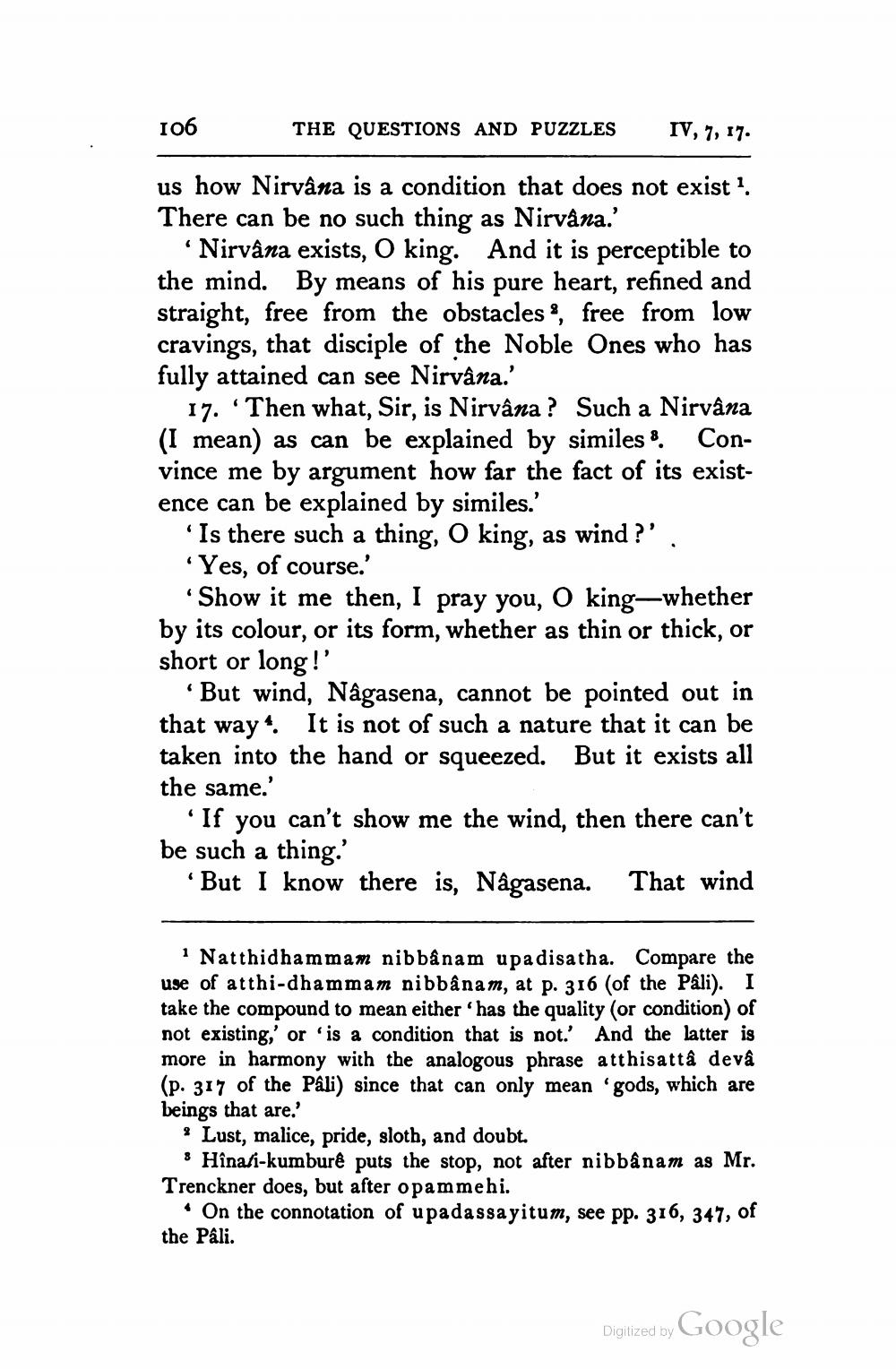________________
IV, 7, 17.
us how Nirvâna is a condition that does not exist 1. There can be no such thing as Nirvana.'
'Nirvana exists, O king. And it is perceptible to the mind. By means of his pure heart, refined and straight, free from the obstacles, free from low cravings, that disciple of the Noble Ones who has fully attained can see Nirvana.'
17. 'Then what, Sir, is Nirvâna? Such a Nirvâna (I mean) as can be explained by similes". Convince me by argument how far the fact of its existence can be explained by similes.'
'Is there such a thing, O king, as wind?' 'Yes, of course.'
106
THE QUESTIONS AND PUZZLES
'Show it me then, I pray you, O king-whether by its colour, or its form, whether as thin or thick, or short or long!'
'But wind, Nâgasena, cannot be pointed out in that way. It is not of such a nature that it can be taken into the hand or squeezed. But it exists all
the same.'
'If you can't show me the wind, then there can't be such a thing.'
'But I know there is, Nâgasena. That wind
1 Natthidhammam nibbânam upadisatha. Compare the use of atthi-dhammam nibbânam, at p. 316 (of the Pâli). I take the compound to mean either 'has the quality (or condition) of not existing,' or 'is a condition that is not.' And the latter is more in harmony with the analogous phrase atthisattâ devâ (p. 317 of the Pâli) since that can only mean 'gods, which are beings that are.'
Lust, malice, pride, sloth, and doubt.
* Hîna/i-kumburê puts the stop, not after nibbânam as Mr. Trenckner does, but after opammehi.
On the connotation of upadas sayitum, see pp. 316, 347, of the Pâli.
Digitized by
Google




